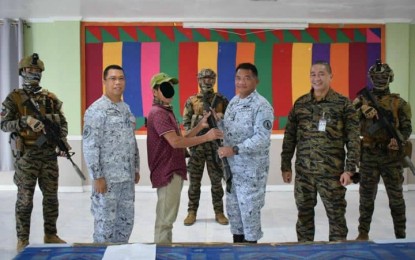
Nawapi Abdulsaid: Militant’s Death Represents Another Nail in Abu Sayyaf’s Coffin
Publication: Militant Leadership Monitor Volume: 15 Issue: 4
By:

Executive Summary:
- Nawapi “Khatan” Abdulsaid was an Abu Sayyaf militant infamous for his pro-Islamic State outlook and role in the militant group’s piracy operations. While he was reportedly killed in battle in July 2017, the Philippine military has announced that this was a mistake. Abdulsaid allegedly survived until April 2024, when he met his end in a battle on Basilan Island in the southern Philippines.
In July 2017, the Philippine Armed Forces Western Mindanao Command (WESTMINCOM) announced that Nawapi Abdulsaid (alias Khatan) was killed in battle (GMA News Online, July 7, 2017). So confident was WESTMINCOM in the operation that it even claimed to have identified and recovered Abdulsaid’s body. According to WESTMINCOM, Abdulsaid had been involved in an unsuccessful ambush on Philippine soldiers. Officials alleged that Abdulsaid was killed in the ensuing firefight and that weapons and drug paraphernalia had been recovered from the scene of his demise.
Nearly seven years later, Abdulsaid was declared to have been killed yet again. This time Philippine police reportedly located him in the municipality of Hadji Mohammad Ajul on Basilan Island and eliminated Abdulsaid in a gun battle in April (KRDO, April 26). This demonstrated that the original reports of his death were incorrect. It is notable, however, that Abdulsaid became notorious only a short time before the ambush where he had allegedly been killed. This suggests that his first “death” had been intended to serve as a morale boost for the Philippine armed forces.
Abdulsaid was known for his role in an incident that occurred in November 2016, when six Vietnamese sailors were abducted and another was shot in the waters near Basilan Island (Radio Free Asia, November 11, 2016). At that time, the main factions of Abu Sayyaf had recently pledged loyalty to Islamic State (IS), and the group was focusing both on planning its forthcoming siege of Marawi and also conducting piracy operations throughout the waters near Basilan. By the end of 2016, Abu Sayyaf had made around $7 million in ransom money, mostly coming from abductions at sea (The Maritime Executive, October 28, 2016). Abdulsaid led the abduction of the Vietnamese sailors. Ultimately, of the six prisoners Abdulsaid was responsible for, two were freed by government forces, two were beheaded, and the remaining two were killed during Philippine rescue attempts (Vn Express, December 10, 2017).
Abdulsaid is believed to have first cut his teeth in Basilan in 2007, when, under the command of Isnon Hapilon, he beheaded 10 Philippine marines in a notoriously brutal incident (Goshen News, July 12, 2007). The beheading of the Vietnamese sailors in 2016 represented the peak of both Abu Sayyaf’s power and Abdulsaid’s personal brutality. Within a year, the group would conquer and then lose the city of Marawi, followed by a concerted effort that saw many key pro-IS Abu Sayyaf leaders killed. Likewise, Malaysia, Indonesia, and the Philippines began to deepen counter-piracy cooperation around the same time, all but ending Abu Sayyaf’s once-considerable piracy operations (Indo-Pacific Defense Forum, October 17, 2022; see Terrorism Monitor, February 21).
Abdulsaid was important for Abu Sayyaf, both for his role in piracy operations and for being one of the militants spearheading the group’s affiliation with IS (Borneo Bulletin, April 27). However, little had been heard from the supposedly dead Abdulsaid in the years since 2017, amid the death of many of Abu Sayyaf’s leaders, including his superiors (see Terrorism Monitor, April 5). Assuming Abdulsaid’s most recent “death” is accurate, his elimination represents yet another nail in the coffin of an extremely diminished Abu Sayyaf.



